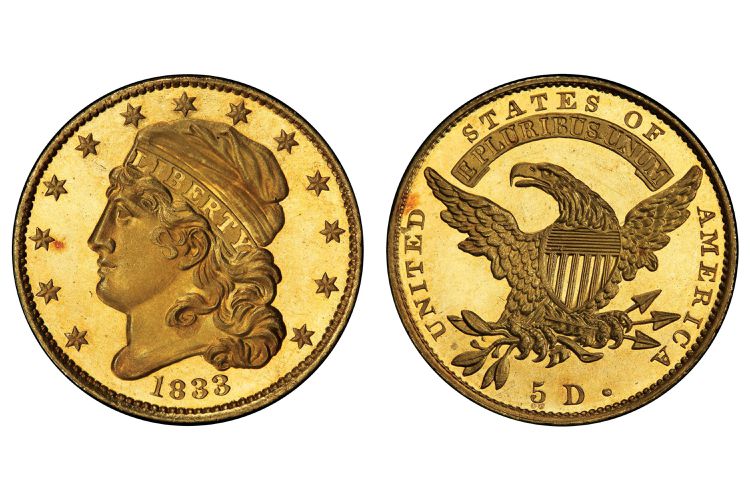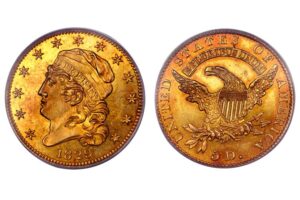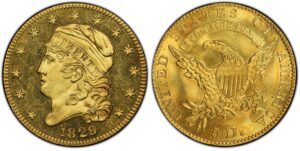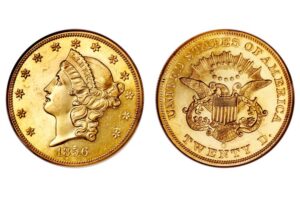If you’re in the market to buy gold, this rare gold coin is going to cost you. D. Brent Pogue assembled one of the highest quality coin collections of all time. He had an eye for beauty and a coin collecting budget that had no bounds. This 1833 Proof Capped Bust five-dollar gold half eagle is as close to perfection as one will ever see on a coin that is approaching 200 years old.
The fields on the coin have a deep reflective surface, and the devices have a light cameo frosted finish. The coin is so well struck even the tiniest details of the design are well defined. The only other known specimen is in the National Numismatic Collection at the Smithsonian Institution. Therefore, this unique coin commands a high price.
This beautiful gold proof coin from 1833 last sold at $1,351,250. Wow, $1.3M for a 1833 gold proof $5 half eagle. This specific gold coin sold last in May 2016. It was graded by PCGS – that grade was PCGS PR-67. That’s a big investment in gold.
When you look back at the gold Capped Head coins, they were minted from 1813-1834. Today, few gold capped bust coins are left. Gold coins were melted a lot back then, everyone was selling gold since they could travel to other countries and get more for the precious metal.
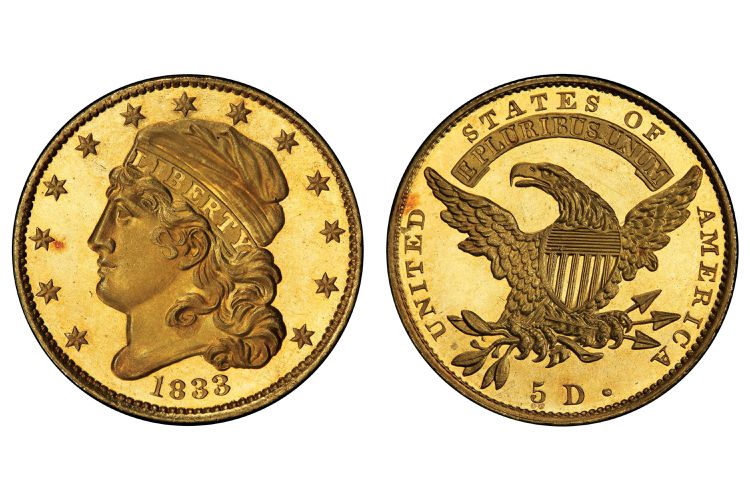
Debuting in the year of 1813, John Reich’s Capped Head design for the half eagle was copied by Chief Engraver Robert Scot in 1818 and extensively reworked by William Kneass in 1829. Reich modified his earlier Capped Bust design by eliminating the bosom and drapery of Liberty, leaving a large head as the central device, surrounded by thirteen stars with the date below.
The reverse was only altered a little from the 1807 design, it depicts an eagle with widespread wings, clutching an olive branch and arrows. Surrounding the eagle are the inscriptions UNITED STATES OF AMERICA and 5 D., with the motto E PLURIBUS UNUM above the eagle’s head. While Scot’s 1818 revision was a crude copy of Reich’s engraving, Kneass’ 1829 modification was a distinct change. Diameters were reduced from 25 to 22.5 millimeters, the portrait appeared in higher relief, and a beaded border replaced the denticles of the previous coin.
These are very rare gold coins, only a handful of examples exist. But if you’re lucky enough to find one, make sure it’s authentic. A lot of people fake these gold coins, so have someone with you that can help you or get down here to the coin shop and we’ll check it for you.
Photo Credit goes to Heritage Auctions, HA.com

